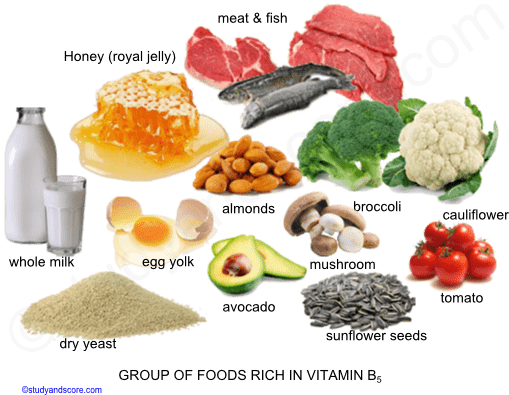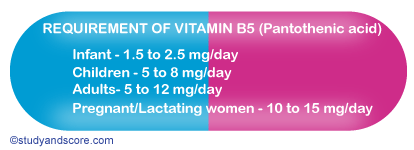In the year 1931, Roger J. Williams and R.W. Truesdail discovered Vitamin B5. Later in 1938 it was isolated and named as pantothenic acid. The term Pantothenic is actually a Greek word, pantos=everywhere. Vitamin B5 is found in all the living organisms.
Basic life processes are impossible without Pantothenic acid. For example utilization of proteins, carbohydrates and fats is not possible in the absence of pantothenic acid. Also the immune system and hormones would breakdown with no pantothenic acid.
Structutally pantothenic acid is a chain of alanine and consists of peptide links with dihydroxy, dimethyl butyric acid. This acid is water soluble.
Dried yeast, liver, royal jelly is the rich sources of pantothenic acid. Egg yolk, meat, fish, milk are good sources.

The recommended daily allowance of pantothenic acid as follows:

Pantothenic acid and its salts are readily absorbed from the small intestine through the portal vein into the general circulation. If ingested in excess of the requirements, it is not stored in the body; but is excreted in urine or metabolized by the tissues.
Deficiency of this vitamin results in nausea, vomiting, certain gastrointestinal tract disorders, inadequate growth, anemia, fatty liver and failure in gaining weights.
Pantothenic acid exists in the free form and in combination with β-mercapto ethylamine, adenine ribose and phosphoric acid. The later form is called as co-enzyme A (CoA).
The metabolic functions of pantothenic acid are due to its coenzyme derivative CoA, which participates in several metabolic reactions. CoA gains further importance after its conversion to form acetyl CoA.
- Share with your friends! -
Login to post your comment here...
- or with social Account -